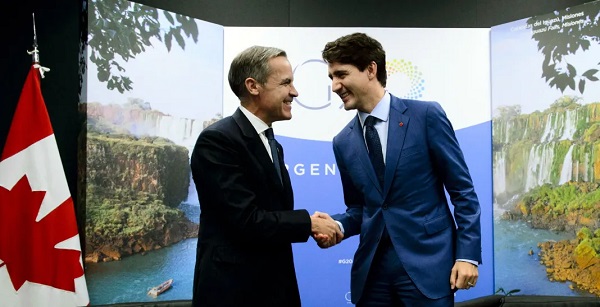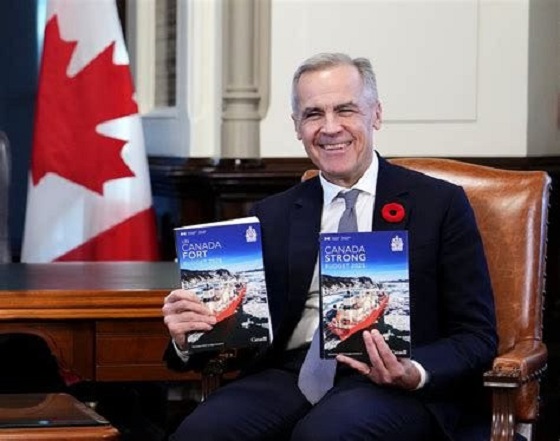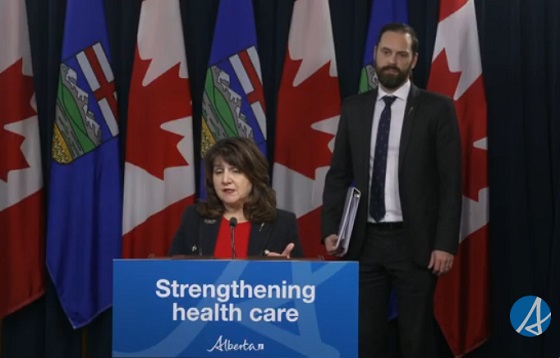Energy
‘Take On The Resistance’: Who Could Trump Tap To Help Cement His ‘Drill, Baby, Drill’ Agenda?
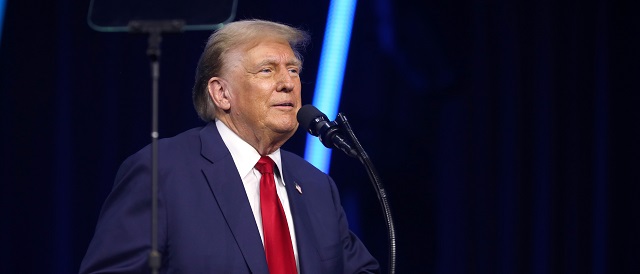
 From the Daily Caller News Foundation
From the Daily Caller News Foundation
By NICK POPE
Former President Donald Trump has promised to revitalize and unleash the American energy sector if he returns to the White House in 2025, and has a plethora of former officials and new faces he could tap for key executive branch roles.
The Biden administration has utilized executive agencies like the Environmental Protection Agency (EPA), Department of the Interior (DOI) and the Department of Energy (DOE) to implement many of the key policies driving its sprawling climate agenda. These agencies will be crucial to any effort by a prospective Trump administration to undo President Joe Biden’s energy legacy and execute Trump’s “drill, baby, drill” agenda.
Several insiders with extensive experience in Republican energy politics speculated to the Daily Caller News Foundation as to who Trump could pick to lead that charge if he wins in November.
“I am really impressed by the number of former Trump officials, as well as people who have not served before who are also interested in doing so in the future who have reached out to inquire about my prior experience or the process,” David Bernhardt, who served as the secretary of the interior during the latter half of Trump’s first term, told the DCNF. “If President Trump wins, he’s going to have droves of capable people to choose from to fill his political appointments this time around — a lot of seasoned veterans, and also a lot of people with new, fresh ideas. I think that’s very exciting and bodes well for the president’s second term and for our country.”
When asked how he would bring down the cost of goods such as gas, Trump says, "Drill baby, drill!" pic.twitter.com/cVjqzjeaAJ
— Daily Caller (@DailyCaller) May 11, 2023
However, the Trump campaign told the DCNF that internal discussions about who may fill these roles have not started.
“There have been no such discussions about who will serve in a second Trump Administration,” Karoline Leavitt, the Trump campaign’s national press secretary, told the DCNF. “When the time comes, President Trump will choose the best possible people to implement his America First agenda.”
Whoever Trump selects to lead the EPA will have to confront an agency that has been juiced with thousands of new employees and promulgated numerous major regulations. The Biden administration has used the EPA to advance some of its most aggressive environmental policies, which include a major green power plants regulation, electric vehicle (EV) mandates, stringent fine particulate matter emissions rules and more.
At least some of these rules figure to be on the chopping block if Trump returns to office, as the former president has already pledged to walk back EV regulations.
Andrew Wheeler, who helmed the agency between 2019 and 2021, could be tapped to take the reins again if Trump wins in November, one energy expert, who wishes to not be publicly identified, speculated to the DCNF.
Others who may be under consideration include Mandy Gunasekara, who served variously as EPA chief of staff, principal deputy assistant administrator and senior policy advisor during Trump’s first term.
“I have a beautiful community in Oxford, Mississippi, and it would be very hard to leave. Plus, the idea of going back into a hostile situation away from my children and the ‘Bible girls’ is hard pill to pill to swallow. Ultimately, that’s a bridge I’ll cross if I get there,” Gunasekara told the DCNF. “Andrew Wheeler is a very experienced leader at EPA and would no doubt faithfully execute the President’s agenda again.”
Myron Ebell, a recently-retired energy policy expert formerly at the Competitive Enterprise Institute and a member of the Trump EPA transition team, believes that Gunasekara and Wheeler “would both be great choices,” he told the DCNF.
“I think it’s inappropriate to discuss a position I may be offered,” Wheeler told the DCNF when contacted for this story.
Another name to watch is Anne Vogel, who currently runs the Ohio EPA, according to the energy expert. Prior to taking that role, Vogel worked for the American Electric Power Company, handling federal regulatory matters in Washington, and she also has experience working at a private law firm.
“Director Anne Vogel currently has no intention of leaving her position at Ohio EPA,” a spokesperson for the agency told the DCNF.
Notably, Vogel testified to Congress in March 2023 about the train derailment and subsequent chemical burn-off that marred the skies of East Palestine, Ohio, in February 2023.
“I think that we’re going to need people that are committed to reforming these agencies and advancing the Trump agenda, which is basically unleashing the energy sector, and that includes the coal industry, oil and gas and everything else,” Steve Milloy, a senior legal fellow for the Energy and Environmental Legal Institute and a former member of the Trump EPA transition team, told the DCNF. “They’ve got to be willing to take on the resistance. And in Trump one, people weren’t necessarily willing or prepared to take on the resistance, and there’s going to be a lot of resistance.”
EPA Chief Insists His Agency Has Not Sent ‘One Dime’ To Hardline Left-Wing Org — But There’s A $50 Million Problemhttps://t.co/BXjlAkuWup
— Daily Caller (@DailyCaller) July 11, 2024
‘Full Speed Ahead’
As the agency in charge of managing America’s federally-controlled lands and waters, DOI has a major role to play in the American energy sector given that it leases millions of onshore and offshore acres to oil and gas developers. Under Biden and Interior Secretary Deb Haaland, DOI has taken numerous actions to restrict development on millions of acres of American land and issued a bare-bones leasing schedule for offshore oil and gas extraction in the Gulf of Mexico, for example.
In light of Trump’s calls to “drill, baby, drill,” the DOI’s approach to natural resource management is likely to change dramatically from its current attitude as part of the Biden administration.
Tom Pyle, president of the American Energy Alliance, told the DCNF to keep an eye on Republican Govs. Mike Dunleavy of Alaska and Doug Burgum of North Dakota as possible leaders of DOI under a prospective second Trump presidency. However, Burgum may be in play for other positions, such as secretary of the interior or perhaps a high-level White House role, Pyle told the DCNF.
A representative for Burgum referred the DCNF to the Trump campaign.
Both McKenna and Ebell indicated that Bernhardt could be a good fit to return to the top job at DOI should he and Trump have mutual interest. For his part, Bernhardt declined to comment about whether he wants to get back into the fray or specific roles he would ostensibly have interest in filling during a second Trump term.
Pyle said he does not expect Trump to feel an obligation to stick to the establishment when selecting his political appointees.
“It’s clear with President Trump’s vice presidential pick [J.D. Vance] that he no longer feels compelled to extend an olive branch to the GOP establishment,” Pyle told the DCNF. “It’s Trump’s party now, and he chose someone who he thinks will best help implement his agenda.”
Mike McKenna, a GOP strategist with extensive energy sector experience, agreed that Dunleavy and Burgum could each be the type of person to run the DOI for Trump if called upon to do so.
“I hope they will go full speed ahead on restoring or increasing energy production in the federal estate” regardless of who Trump might pick for the top job if he wins, Ebell told the DCNF. “But I also hope that they will focus and put some effort into improving federal land management.”
Ebell floated former Alaska Republican Lt. Gov. Mead Treadwell as a possibility should he have interest. He also said that Republican Sens. John Barrasso of Wyoming and Mike Lee of Utah would both do well in the position, in his view, but that they may both be too valuable as seasoned legislators to make the jump to the executive branch.
“Senator Barrasso is focused on working for the people of Wyoming and passing President Trump’s agenda in the U.S. Senate,” a Barrasso spokesperson told the DCNF.
SEN. HAWLEY: "Jobs for blue-collar workers in this nation are valuable resources…Why should those things…be sacrificed in favor of your agenda for radical climate change?"
HAALAND: "I know that there's like 1.9 jobs for every American in the country…There's a lot of jobs."… pic.twitter.com/n21gostPdE
— Daily Caller (@DailyCaller) May 2, 2023
‘Dark Horse’
Choosing a successor for Jennifer Granholm to lead the DOE will be another key decision for Trump should he prevail this November.
Among other initiatives, the Biden DOE has pushed regulations promoting energy efficient appliances, a broad building decarbonization agenda and sought to loan huge sums of taxpayer cash to green energy companies since 2021.
McKenna, who is plugged into both the energy industry and GOP politics, flagged several possible candidates to look out for.
Paul Dabbar, who served as the under secretary for science at DOE during Trump’s first term, could be an option, with McKenna pointing to his managerial skills as a strength that could appeal to Trump. Dabbar declined to comment when contacted for this story.
McKenna also identified Burgum as a possible option for DOE, but like Pyle, McKenna believes that Burgum could be called on to take any number of roles, stretching from DOE to the White House or even the Department of Commerce, should he have interest in serving in a possible second Trump administration.
One “dark horse” possibility to watch is Bill Cooper, who currently works for Golden Pass LNG as vice president and general counsel, McKenna said. In addition to his private sector mettle, Cooper has experience at DOE, having served in the agency for about two years in various senior roles during Trump’s first term, making him a possible candidate should he have interest in the gig.
Ebell is not discounting the possibility that Trump may dip into the private sector to find his potential energy secretary.
“I think looking in the private sector makes sense,” Ebell told the DCNF. “It makes a lot of sense if it’s somebody who isn’t part of the subsidy chain, who isn’t part of the corporate welfare world, special interests who get money under the so-called Inflation Reduction Act, or other DOE programs.”
Cooper, Treadwell, Lee’s office and Dunleavy’s office did not respond to requests for comment.
Alberta
IEA peak-oil reversal gives Alberta long-term leverage
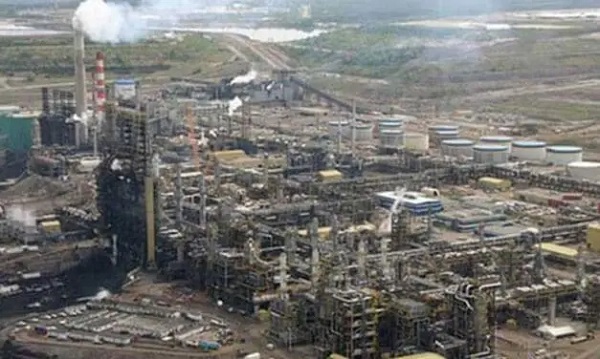
This article supplied by Troy Media.
The peak-oil narrative has collapsed, and the IEA’s U-turn marks a major strategic win for Alberta
After years of confidently predicting that global oil demand was on the verge of collapsing, the International Energy Agency (IEA) has now reversed course—a stunning retreat that shatters the peak-oil narrative and rewrites the outlook for oil-producing regions such as Alberta.
For years, analysts warned that an oil glut was coming. Suddenly, the tide has turned. The Paris-based IEA, the world’s most influential energy forecasting body, is stepping back from its long-held view that peak oil demand is just around the corner.
The IEA reversal is a strategic boost for Alberta and a political complication for Ottawa, which now has to reconcile its climate commitments with a global outlook that no longer supports a rapid decline in fossil fuel use or the doomsday narrative Ottawa has relied on to advance its climate agenda.
Alberta’s economy remains tied to long-term global demand for reliable, conventional energy. The province produces roughly 80 per cent of Canada’s oil and depends on resource revenues to fund a significant share of its provincial budget. The sector also plays a central role in the national economy, supporting hundreds of thousands of jobs and contributing close to 10 per cent of Canada’s GDP when related industries are included.
That reality stands in sharp contrast to Ottawa. Prime Minister Mark Carney has long championed net-zero timelines, ESG frameworks and tighter climate policy, and has repeatedly signalled that expanding long-term oil production is not part of his economic vision. The new IEA outlook bolsters Alberta’s position far more than it aligns with his government’s preferred direction.
Globally, the shift is even clearer. The IEA’s latest World Energy Outlook, released on Nov. 12, makes the reversal unmistakable. Under existing policies and regulations, global demand for oil and natural gas will continue to rise well past this decade and could keep climbing until 2050. Demand reaches 105 million barrels per day in 2035 and 113 million barrels per day in 2050, up from 100 million barrels per day last year, a direct contradiction of years of claims that the world was on the cusp of phasing out fossil fuels.
A key factor is the slowing pace of electric vehicle adoption, driven by weakening policy support outside China and Europe. The IEA now expects the share of electric vehicles in global car sales to plateau after 2035. In many countries, subsidies are being reduced, purchase incentives are ending and charging-infrastructure goals are slipping. Without coercive policy intervention, electric vehicle adoption will not accelerate fast enough to meaningfully cut oil demand.
The IEA’s own outlook now shows it wasn’t merely off in its forecasts; it repeatedly projected that oil demand was in rapid decline, despite evidence to the contrary. Just last year, IEA executive director Fatih Birol told the Financial Times that we were witnessing “the beginning of the end of the fossil fuel era.” The new outlook directly contradicts that claim.
The political landscape also matters. U.S. President Donald Trump’s return to the White House shifted global expectations. The United States withdrew from the Paris Agreement, reversed Biden-era climate measures and embraced an expansion of domestic oil and gas production. As the world’s largest economy and the IEA’s largest contributor, the U.S. carries significant weight, and other countries, including Canada and the United Kingdom, have taken steps to shore up energy security by keeping existing fossil-fuel capacity online while navigating their longer-term transition plans.
The IEA also warns that the world is likely to miss its goal of limiting temperature increases to 1.5 °C over pre-industrial levels. During the Biden years, the IAE maintained that reaching net-zero by mid-century required ending investment in new oil, gas and coal projects. That stance has now faded. Its updated position concedes that demand will not fall quickly enough to meet those targets.
Investment banks are also adjusting. A Bloomberg report citing Goldman Sachs analysts projects global oil demand could rise to 113 million barrels per day by 2040, compared with 103.5 million barrels per day in 2024, Irina Slav wrote for Oilprice.com. Goldman cites slow progress on net-zero policies, infrastructure challenges for wind and solar and weaker electric vehicle adoption.
“We do not assume major breakthroughs in low-carbon technology,” Sachs’ analysts wrote. “Even for peaking road oil demand, we expect a long plateau after 2030.” That implies a stable, not shrinking, market for oil.
OPEC, long insisting that peak demand is nowhere in sight, feels vindicated. “We hope … we have passed the peak in the misguided notion of ‘peak oil’,” the organization said last Wednesday after the outlook’s release.
Oil is set to remain at the centre of global energy demand for years to come, and for Alberta, Canada’s energy capital, the IEA’s course correction offers renewed certainty in a world that had been prematurely writing off its future.
Toronto-based Rashid Husain Syed is a highly regarded analyst specializing in energy and politics, particularly in the Middle East. In addition to his contributions to local and international newspapers, Rashid frequently lends his expertise as a speaker at global conferences. Organizations such as the Department of Energy in Washington and the International Energy Agency in Paris have sought his insights on global energy matters.
Troy Media empowers Canadian community news outlets by providing independent, insightful analysis and commentary. Our mission is to support local media in helping Canadians stay informed and engaged by delivering reliable content that strengthens community connections and deepens understanding across the country.
Alberta
READ IT HERE – Canada-Alberta Memorandum of Understanding – From the Prime Minister’s Office
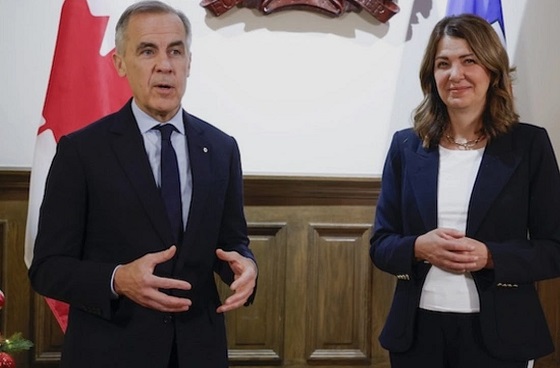
-

 Alberta10 hours ago
Alberta10 hours agoFrom Underdog to Top Broodmare
-

 Artificial Intelligence2 days ago
Artificial Intelligence2 days agoTrump’s New AI Focused ‘Manhattan Project’ Adds Pressure To Grid
-

 International2 days ago
International2 days agoAfghan Ex–CIA Partner Accused in D.C. National Guard Ambush
-
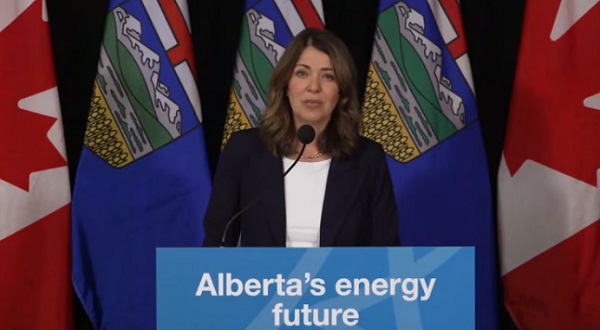
 Alberta1 day ago
Alberta1 day agoAlberta and Ottawa ink landmark energy agreement
-

 International2 days ago
International2 days agoTrump orders 500 more troops to reinforce D.C. after Guard shooting
-

 armed forces2 days ago
armed forces2 days agoCarney’s ‘Shared Sacrifice’ Is a Lie. Only Veterans Are Bleeding for This Budget
-

 Energy1 day ago
Energy1 day agoPoilievre says West Coast Pipeline MOU is no guarantee
-

 International2 days ago
International2 days agoTrump Admin Pulls Plug On Afghan Immigration Following National Guard Shooting




